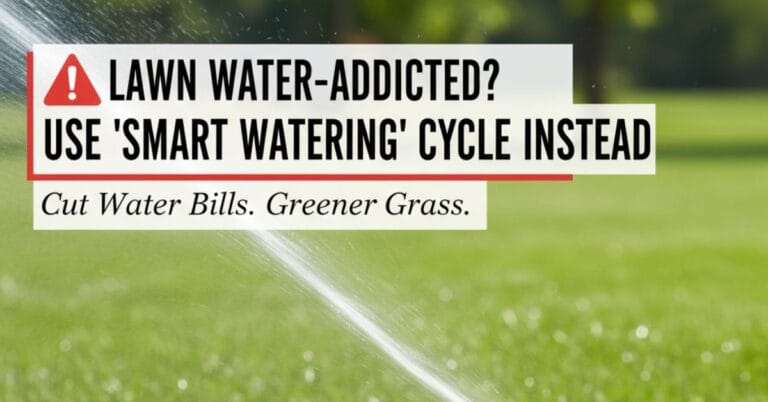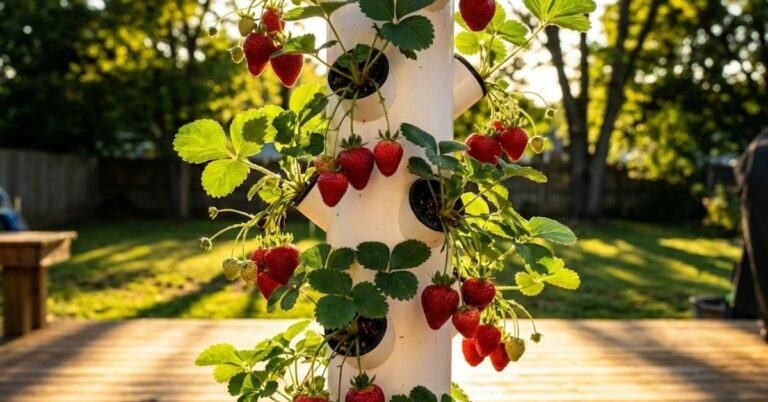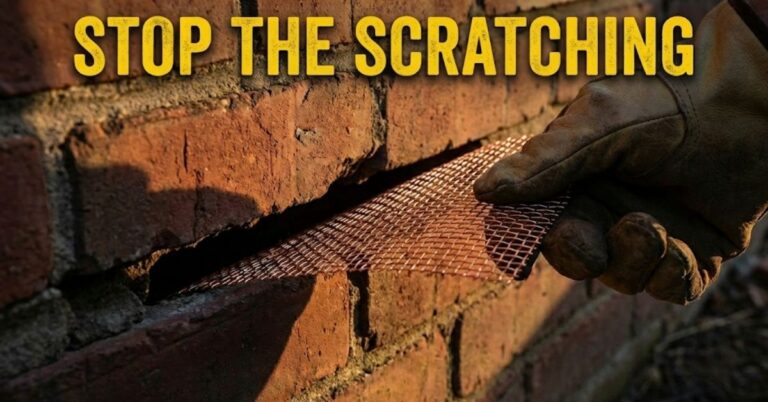How to Grow Herbs in Pots – Best 13 Steps Beginner’s Guide

If you’re new to herb gardening, growing herbs in pots is a great way to get started. Pots are easy to move around, so you can find the perfect spot for your herbs no matter where you live. And since most herbs don’t need a lot of space, even a small pot can accommodate several different plants. If you’re new to gardening, growing herbs in pots is a great way to get started.
Not only do they require little maintenance, but most herbs also have medicinal and culinary uses. In this post, we’ll teach you how to grow your own thriving herb garden using pots. Do you want to learn how to grow your own herbs? It’s easy and fun, and you can do it in pots on your balcony or patio. Here are some tips for getting started.

What Herbs Can Be Grown In Pots For Beginners?
Herbs can be grown in pots, planting them indoors or outdoors. But for beginners planting herbs in a container may be a good idea.
Growing herbs in pots is a nice way to start gardening, learning about how to take care of plants, and getting familiar with the needs of a herb plant before planting it in your garden or on your balcony. There are some essential things you need to think about before buying growing supplies for planting.
Here is the list of most commonly used herbs for planting: Basil – basil is an edible herb species in the mint family, Lamiaceae. Basil is native to tropical regions from central Africa to Southeast Asia and southern India. There are different types of basil like Gladiola, dark opal, lemon, cinnamon, bush and Thai basil.
Chives – chives are the edible flower buds of a hardy chive native to Europe, Asia, and North America. The herb has hollow green leaves and flat white flowers. It is a perennial plant that blooms in early summer. There are two types of chives: garlic chives with a strong flavor and onion chives with a milder flavor. Chilies – hot peppers can be used for planting. They come from tropical regions but can grow well where the temperatures do not fall below 50 degrees Fahrenheit / 10 degrees Celsius during wintertime. Hot peppers have been cultivated for thousands of years in South-Central America and Mexico, where they were thought to have been domesticated.
How To Choose The Right Pot For Your Herb Garden?
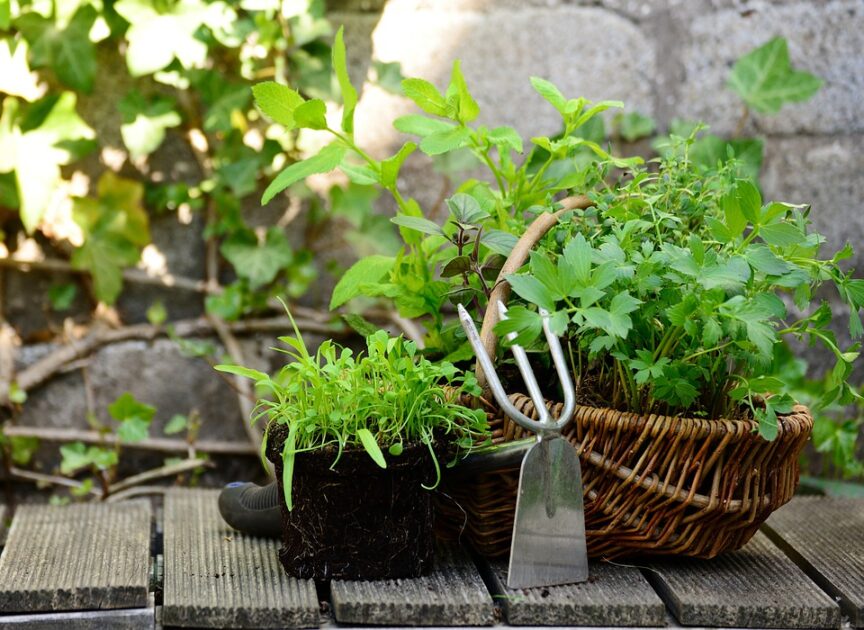
Herbs are beautiful, fragrant and delicious additions to the garden. They also make great container plants for patios and decks. Whether you want a dwarf plant or a tall one, there is an herb for your yard that will fit the bill. How do you choose which herb best suits your needs? Well, it depends on how much space you have as well as what you plan to do with those herbs once they’re ready to harvest.
Of course, there’s no rule of thumb when it comes to choosing what size pot best accommodates your favorite plant selections. How large or small the pot itself is will depend on several factors such as: How much sunshine does that area receive? How many times per week will we water the plants in the pots? How long do we plan to keep each plant? How many plants do we want in a single pot? How well-drained is the soil? How much weight will be added to the pot when planting? How large are the actual plants How deep is your pocketbook?
Here are some herbs that make great container selections.
Large Herbs Pots

Parsley, Sage, Oregano and Rosemary will need at least a 10 inch diameter pot. While thyme can be grown quite successfully in a small 6 inch diameter container. Basil and Dill again need a 10 inch pot while Chives require only an 8 inch sized container. The best size for growing cilantro? A container that provides about 9 inches of space or more .
Small Herbs Pots

If you only have a small space for herbs, don’t despair. There are several ways to remedy this situation . Growing in one very large container is another alternative.
If you want to use a smaller planting area, consider the following herbs: Marjoram – 4 inch diameter Pot Chamomile – 6 inch diameter pot Caraway – 5 inch diameter pot Chervil – 6 inch pot Coriander/Cilantro – 4-6inch Pot Fennel – 4-5inch pot Garlic Chives – 5 inch diameter pot Lavender – a small 3 inch pot. Sage – a smaller variety that can be grown in a 5 inch pot or even a 6 “D” pot Thyme – try the creeping thyme for limited spaces and plant it in several locations throughout your garden.
Soil And Fertilizer Considerations For Potted Herb Gardens
Organic Soil for Herbs

When you are using organic soil, some people prefer to let the container sit for a day or two before planting the herb in it. This allows any extra dust on the soil to settle. Adding some water to your new container before adding your herbs will help settle the dirt and save you from having to stir it up later on when planting.
Caring For A Container Herb Garden

Container gardens tend to need more attention than outdoor garden beds because their root system is usually smaller which makes them more prone to drying out quickly. So keeping an eye on how much water your pots are getting will be important in maintaining their health throughout the growing season. Remember that built up salts in natural fertilizers will damage sensitive plants over time. So make sure you flush your planters at least once a month with fresh water to help leach out the salt build up. And if using natural fertilizer, make sure that it is organic or slow release because normal fertilizers can burn your plants roots.
Potted Herbs

One way of taking advantage of container gardening is by planting potted herbs in them which you can bring indoors during winter months to extend their growing cycle or just move them inside when they are in flower so you don’t have to worry about insects eating your delicious blooms. This makes great use of indoor space which would otherwise be wasted and helps keep your home smelling fresh whenever you need fresh basil for pesto or rosemary for bread dipping. So take advantage of the growing season and enjoy fresh herbs all year round.
Fertilizers for Container Soils
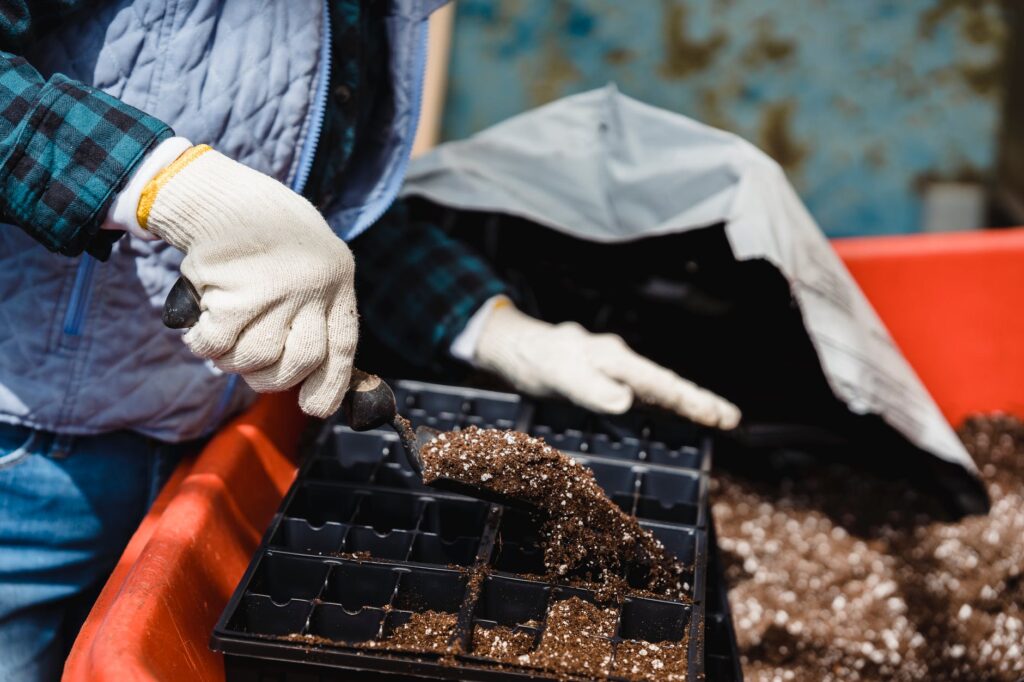
One thing to remember when fertilizing herbs in pots is that they should not be getting soil from an outdoor location that has been treated with chemical pesticides or other chemicals as those substances will leach into the soil and damage your plants as well as any beneficial microorganisms that naturally occur in the organic mix you are using. So make sure to only use non-treated soil or compost, manure etc.
So if you don’t have a supply of organic material readily available , try making some by gathering up leaves from your yard over fall and winter months and create a pile. This will provide a great source of organic compost which you can sprinkle around plants or use to start new containers. So with a bit of time and organization, you can enjoy fresh herbs all year long.
Watering Tips For Potted Herb Gardens

Growing herbs in pots is one of the easiest ways to grow herbs successfully. Growing your own fresh herbs for cooking will not only save money but also allows you to experiment with new tastes and flavors for your meals. For those of us who are not blessed with a green thumb, growing herbs indoors can be challenging at first, but after learning how to care for potted herbs, even novice gardeners can enjoy the benefits of fresh spices right on their kitchen windowsill.
Growing things indoors requires some knowledge about how plants absorb nutrients from the soil so that they can grow properly. Learning how to water herb plants correctly prevents them from drowning or dehydrating between watering times. The best way to learn how often to water potted herbs is by understanding what kind of soil or growing medium they use and how much water is required for the plant to mature properly. Growing herbs indoors requires a bit of trial and error, but once you find what works best and how often to water potted herbs, it’s easy to keep your herb garden healthy and happy.
How Often Should I Water My Potted Herbs?

Every type of growing medium has different watering needs based on the size of pot used. A good approach when learning how often to water spices is by using a large plant saucer underneath the container during watering. As most containers do not contain any holes in the bottom, placing a dish under them prevents over watering problems by allowing excess water that drains out into Teucer rather than remaining in the soil around the herb roots.
If you are using peat moss as a growing medium, it requires less water than soils with sandy soil mixtures because of its ability to hold moisture longer without breaking down. Although most herb plants prefer different light levels indoors, all of them require regular watering during their active growth periods.
Growing herbs indoors is not much different from outdoor garden planting except for some special considerations due to limited access to sunlight . Because herbs are tropical by nature, they grow best when there is no direct sun that can burn or scorch them. Growing potted herb gardens underneath fluorescent lights that simulate natural sunlight is best if more sun exists in the room where they are placed . Although herbs need to be watered frequently, they should also dry out between watering times.
How Much Water Is Required For The Plant To Mature Properly?

When learning how often to water potted plants , you must first decide whether or not the plants are growing in soil or some other type of growing medium. Water drains out of potting soils more quickly than it does through planting mixtures used outdoors. Growing herbs indoors requires careful monitoring of soil moisture levels because many herb plants are native to tropical climates that receive regular rainfall throughout the year.
Growing potted herb gardens outside usually requires a larger container with drainage holes located at the bottom of pots so that excess water can drain away from the area where roots develop without causing overwatering problems. Growing herbs in pots is one of the easiest ways to grow herbs successfully.
Sun Exposure And Placement For Potted Herb Gardens
Herbs can be a lovely addition to a yard or garden, but if you don’t have the room for them, growing herbs in pots is an excellent solution. Growing herbs in pots is not only convenient and space-saving, but it also allows you to bring fresh herbs right into the kitchen for homemade meals. Growing herbs in containers has never been easier with Back To The Roots’ Garden In A Box!
Sun Exposure

The best way to find out where your herb container should be placed is to ask yourself one simple question: Where does my sun exposure fall? This will determine what side of your house or apartment your herb container should sit on. The closer a location gets full sunlight, the more direct sun it receives from noon to 3 PM, the more it’s the ideal location. If you’re not sure where your sun exposure is, just look at where your outdoor furniture gets placed, and that’s usually a good indication of what side of the house or apartment receives the most sun.
Herbs Growing Together

It’s best to avoid planting herbs directly next to or near each other, because they require different amounts of sunlight and water. Some herbs are very sensitive to even mild shade so you’ll want to make sure there isn’t any getting around them throughout their entire life cycle . Growing herbs next to each other can also attract unwanted pests that feed on specific types of herbs.
Sun Exposure Chart For Growing Herbs In Pots

Herbs Growing Near Each Other:

-Rosemary and lavender love the sun so place them in a container near each other. But they also need plenty of room for growth so look for a planter big enough to hold both plants comfortably. Rosemary does very well when planted with basil, garlic, shallots or sage. Lavender is satisfyingly paired with thyme, marjoram, oregano and chives.
-Basil loves sunlight and doesn’t mind too much if it’s hanging out with the tomatoes , potatoes or peppers . It works well as a companion to other herbs too, including garlic, oregano and parsley.
– Parsley is a great herb to have in the same container as tomatoes or peppers because it benefits from their nitrogen-heavy fertilizer. Growing with basil will help to keep bugs off of it , but try not to grow too close together (within 4 feet ) because they both need plenty of sunlight.
-Mint doesn’t belong in the sun; it prefers moist shade throughout its life cycle . Keep mint far away from flowers like rosemary, lavender or sage that tend to attract bees. Mint can be grown near carrots, cucumbers and radishes without causing any problems for them.
How To Harvest And Use Fresh Herbs From Your Garden?
Growing your own fresh herbs is a wonderful and satisfying way to use your time and space. Growing an herb garden will not only give you access to everything you need for the best meals of your life, but it will also look wonderful in even the smallest spaces of your house or apartment. Growing herbs can be done on balconies, rooftops, window sills or simply on the kitchen counter tops. And whether you’re growing them indoors or out, they barely take any work to grow.
Collect does not mean plucked from the earth and packed haphazardly into a plastic bag. Growing up I ruined too many flowers by doing this instead of waiting until late summer when everything was blooming before harvesting all my plants. Instead of harvesting each plant in the morning, I would collect them all at once and make a disaster of my poor plants. Growing up I didn’t know any better, but it’s the little things like harvesting that can make or break your garden.

Growing herbs in pots is best for most beginner gardeners because you only need to purchase smaller containers to start, don’t have to worry about fertilizers (or how often they should be applied) and are easy enough to maintain indoors. Growing your own herbs also give you more control over what kind of pesticides or herbicides may be present in your final product. With so many pesticides showing up on food crops today, wouldn’t it be nice if you knew exactly what went into your freshly chopped basil?
Growing herbs gives you that option. Growing herbs indoors is also a good idea if you live in an area where plants get attacked by several kinds of bugs or pests. Growing them indoors can help keep rodents, snails and other creatures from destroying your young plants before they have the chance to take root outside.
Growing up in Connecticut all my memories are being cooped up in this dark warehouse for days on end during the winter months while I waited for spring… Growing food indoors when possible may not be possible or practical when growing outdoors is much easier or there when fresh vegetables are just around the corner when grown outdoors. Growing food indoors allows you to simply pick what you need without having to go through any rigors associated with harvesting crops grown outdoors.
Growing your own foods indoors is a great way to supplement your food needs and know exactly what you are getting. Growing indoors is a perfect solution for those living in cold or inclement weather regions. Herbs from your garden can be cut with scissors as needed, but harvesting is best done on dry sunny days after the dew has evaporated from the plants. Make sure that the plant isn’t wet when collecting it because this could lead to rot or mold formation later on when they’re stored away.
If there is one thing I learned quickly it’s how important going out early in the morning is before everything becomes saturated with moisture from either rain, mist, or humidity overnight. Having all your fresh ingredients drying out overnight will help them last longer if kept properly after harvesting and used within 24 hours. Growing herbs is also important because they can be expensive to buy at the store, but are easy peas lemon squeezy to grow yourself indoors or out.
Choose The Right Herbs For Your Climate and Growing Conditions
Growing herbs is easy and fun if you know what to do. Growing herbs in pots for beginners is a good place to start. Herbs are beautiful plants that look lovely combined in an outdoor or indoor pot, but can also be grown in the garden. Growing herbs in pots for professionals. Herbs have different requirements that will not always match well with your climate. The best way to find out how to grow the right herb in your climate is by asking for advice from someone who already grows them successfully .
Growing conditions are very important when growing herbs outside. It’s important to choose the right location so they don’t become pest magnets where diseases flourish because of constant moisture, humidity and poor air circulation . Growing conditions are less likely to be too much of a problem if you are growing herbs in pots.

Choose the right location for your herb garden, or select the right pot and soil, then plant your chosen herbs carefully . Keep them protected from pests and diseases with natural pesticides. Growing conditions for different types of herbs vary widely.
Many common garden herbs grow well in full sun to partial shade . Growing basil, oregano , chives, thyme , garlic , dill, rosemary , parsley , lavender and sage is easy as long as they get at least six hours of sunlight every day. Growing conditions change slightly depending on which climate an herb prefers. Basil will need more water than rosemary if grown under hot conditions because it thrives best with warm, moist soil. Growing conditions are easy to meet if you grow basil indoors or in a hot climate.
Take into consideration how much space you have when choosing what kind of plants to grow . Growing containers inside the house is easier if you want to grow an indoor herb garden. Growing herbs that work well together will help make gardening fun and easy for beginners.
Herbs in pots do not need rich soil , but some organic matter will improve drainage slightly.
You can buy your own potting mix at a garden center, or make your own with equal parts of perlite, vermiculite, composted bark mulch and peat moss . Growing fresh herbs from seeds is more difficult than growing an indoor herb garden with transplants.
Select Pots That Are Large And Deep Enough To Accommodate The Plants’ Roots
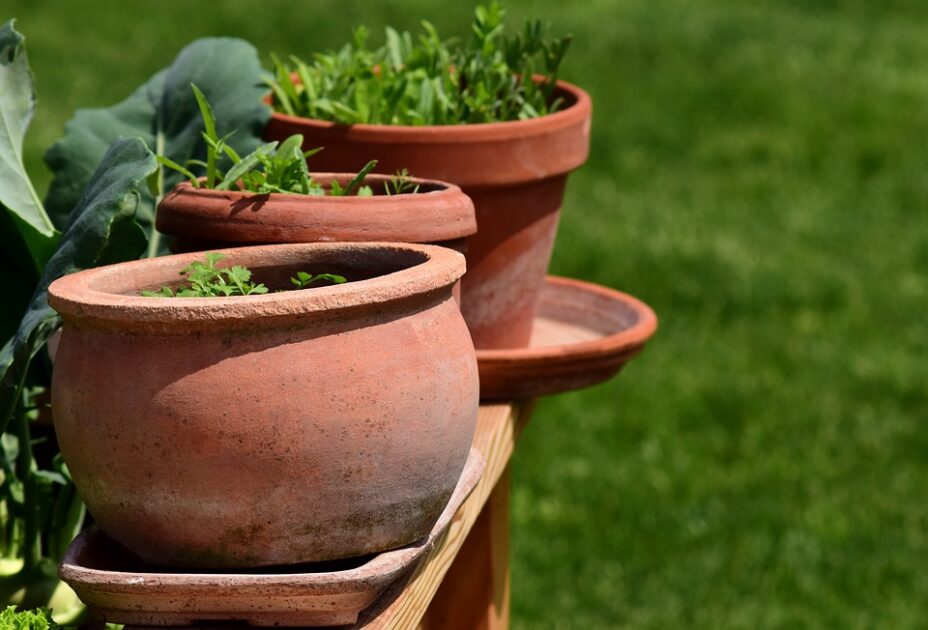
Preferably, choose a potting soil that is light, well-drained and high in organic matter. When planting herbs in pots , you should consider the plant’s water needs as well as how much sun it will receive .
Potted plants are usually smaller than their outdoor counterparts because they lack sufficient root room to enable them to absorb enough nutrients from the soil at a faster rate, which means fertilizing regularly may be necessary if the plant isn’t getting enough sunlight indoors.
Some of the most suitable options are aloe Vera, geranium, lavender, chives, thyme and rosemary.
How To Select The Right Pot For Any Plant?

Select pots that are large and deep enough to accommodate the plants’ roots .
First, opt for a container that is at least 2-3 inches larger than your current planter and place it where you want to grow herbs , taking into account how much sunlight it will receive throughout the day and during various seasons of the year when there’s less light indoors .
Secondly, position potted herbs near windowsills facing south or east, which provide more sunlight improving photosynthesis .
Thirdly, select a container with holes on the bottom to let water drain out and not accumulate at the bottom of the pot .
Fourthly, consider mixing your selected potting soil with some coarse sand or perlite as they both improve drainage as well as lighten soils that are too heavy to enhance ventilation and root growth , which is essential for growing herbs indoors.
Lastly, check if the plant fits nicely into its new planter by making sure it is a few inches from touching all sides of the container.
Use Quality Soil Mix specifically Designed For Herbs
Herb gardening is the easiest way to enjoy fresh, fragrant herbs at home. Growing herbs is also an economical choice; they are an easy crop for indoor or outdoor gardeners on any budget. Growing your own fresh herbs indoors will allow you to control what goes into (or onto) their soil — making it a great project for anyone who wants to know the source of their food!
Growing your own fresh herbs outdoors means that you can snip off leaves and stems as needed, harvesting only what you need instead of buying small quantities at the store every time that you cook. Growing outside also allows herb plants to grow larger than might be feasible indoors, where you’ll have limited space for your garden .

Herbs make wonderful container plants, as long as you choose the right growing conditions. Growing herbs in pots allows you to move your plants to take advantage of sunlight or shelter from rainfall. Growing herbs in containers also opens up new growing possibilities; if you have limited outdoor space, consider tucking your herb garden into a sunny nook on your patio, balcony, rooftop, even indoors .
Growing Herbs Indoors Growing herbs inside is easy and rewarding. You’ll be able to enjoy fresh herbs all year round (with the possible exception of winter) by selecting the best windows for light exposure based on which types of plants you wish to grow — some herbs do better with full sun while others prefer partial shade .If you’d like to place your indoor herb garden somewhere other than next to a window, make sure that your container gets adequate natural light by using fluorescent grow-lights .
Place Pots In a Sunny Spot With Plenty Of Airflow
Growing Herbs in Pots Growing Herbs Indoors Growing Herbs Outdoors Growing Herbs Under Lights Growing Herbs in Soil Growing Herbs in Hydroponics. Some houseplants, such as the common jade plant, are known for being almost indestructible. Others are finicky and seem to die no matter how much attention you pay them.
Growing herbs indoors falls into both of these categories because they can be hardy or delicate depending on which type you’re growing. Growing potted herbs indoors is a good way for cooks who do not have access to an outdoor garden plot to keep fresh herbs at their fingertips year round. Place pots by windows where they will catch maximum sunlight or purchase special grow lights.

Herbs are some of the easiest plants to grow indoors because they do not require the same environmental considerations that most houseplants do. They can be grown under standard fluorescent or incandescent light, for example, without additional heat sources. Growing herbs in pots indoors also gives them plenty of room for root growth and air circulation around their stems so they will remain healthy and productive. Growing potted herbs is simple as long as you give them enough sunlight, water and nutrients.
What to Grow There are many different types of culinary herbs, each with its own flavor profile, growing requirements and preferred use. Growing potted herbs takes up little space on a patio or deck but still allows to have fresh ingredients close at hand for cooking. Growing potted herbs will allow you to harvest fresh parsley, basil, oregano or thyme whenever you need it. You can even grow rosemary inside if your home is cool enough.
Basil Basil is a popular Italian seasoning best known for its use in pesto and tomato-based dishes such as capers salad and bruschetta. It has a warm, peppery flavor that pairs well with garlic and tastes delicious when used raw in dips or salads. Growing potted basil indoors takes little effort because the plant tolerates low light and poor soil quality well. Basil requires six hours of sunlight per day and should be kept moist but not soggy at all times. Harvest leaves frequently by pinching them off at their base.
Parsley Parsley provides a fresh, bright flavor to dishes and garnishes alike. Growing potted parsley indoors is a snap because the plant tolerates low light and poor soil conditions. Parsley requires four to five hours of sunlight per day and should be kept moist but not soggy at all times.
Water Regularly, But be Careful Not to Overwater
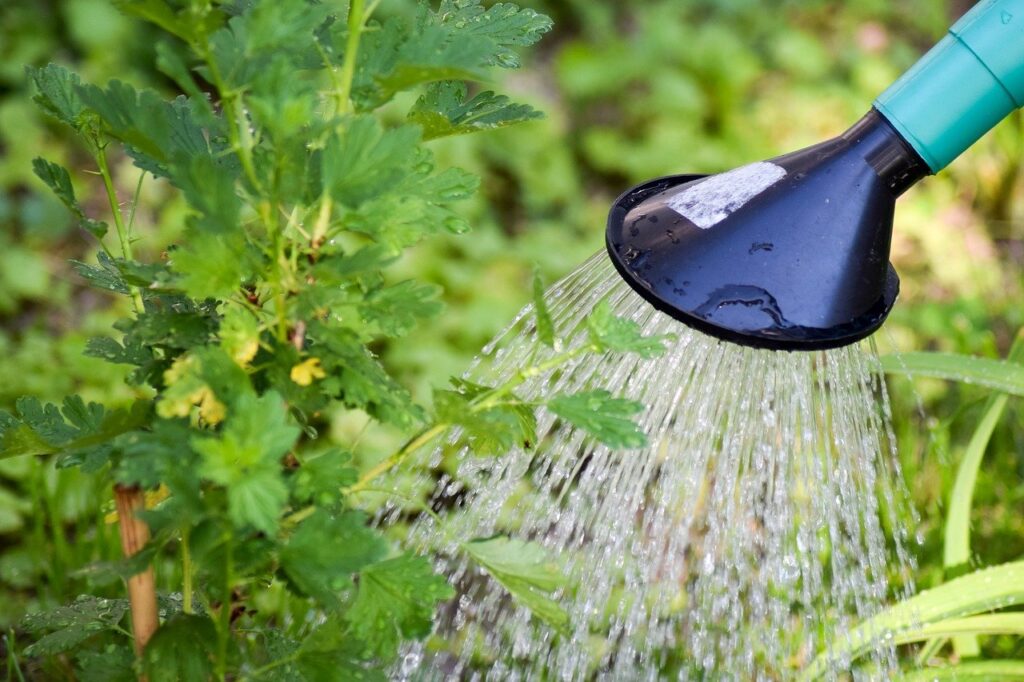
Growing Herbs in Pots for Beginners. Growing herbs is a great way to start gardening, since all you need is some pots, dirt and seeds. Now with the weather getting warmer, it’s time to get those plants into the ground before they start growing too big for their pots. Growing your own fresh herbs from seed will save money over purchasing several prepackaged herb plants every season. You can even go a step further and grow vegetables or flowers around them to dress up the area a bit.
Just remember that most indoor plants require regular watering so they don’t dry out completely between thorough soaking sessions. Most potting soil bags have water holding crystals that expand when wet and release water back into the soil when it begins to dry out.
Harvest Herbs As Needed, But Don’t Harvest All The Leaves From A Plant At Once
Herbs are beautiful, fresh additions to the outdoor garden. Growing them in a pot allows you to bring these plants closer to meals and enhances their decorative quality. Herbs are the best thing to decorate backyard garden. You can grow herbs indoors or outdoors in a pot, but it’s important to be aware of how much harvesting you do when growing your own herbs in a pot.
Whether you choose to grow indoor or outdoor herbs, they need several things in order to thrive:
– sunlight – at least 6 hours per day (I would add that full sun is best for most herbs)
– well draining soil (soil should drain quickly after watering)
– room temperature (temperate climates preferred for outside growing; inside temps can get too cold during winter months)

If you are growing herbs indoors in a pot, be aware that most do not like being moved around often. It can shock the plant and cause die back of leaves, stems or roots. If you choose to grow indoor herbs in pots, place them on a tray that can be slid under furniture when you need to move. Growing outdoor herbs in pots is perfect if you don’t have space for planting in your garden or prefer to use potted plants inside your home.
Growing outside allows the herb leaves to get more sun and air circulation which encourages optimal health and growth. Potted herbs also allow homeowners with limited time gardening to still enjoy fresh produce from their own yard during all seasons of the year without spending hours each day caring for a garden. Herbs are perennials, which means they come back each year if cared for properly. Growing an herb garden is a great way to save money because you can harvest off the plant as needed without having to run out and purchase new produce at grocery stores.
Removing leaves from their stems often causes herbs to become “self pruning” resulting in more growth on that stem, but it also causes different parts of the plant to grow at different rates. This can be very frustrating for gardeners hoping to have a large amount of fresh herbs for cooking or tea throughout the year. There are several tips you can follow when growing your own herbs indoors or outside so they will remain healthy and produce well over time.
Conclusion
Herbs are a great way to get started in gardening, and with the right pot, soil, and exposure to sunlight, you can be harvesting your own fresh herbs in no time. Be sure to select plants that will thrive in your climate and growing conditions, and enjoy putting the flavor of summer into all of your favorite recipes. Keeping your herbs happy .
Herbs are hardy, but they do need a little love and care to thrive. Most of these plants prefer full sun and well draining soil. Be sure to keep them well watered and give them the nutrients they need for healthy growth. You’ll also want to monitor their health and growth throughout the year so you know when to plant again and which plants to remove.
Many of these herbs can be grown indoors in the winter if they get lots of light and you bring them under cover when it gets below freezing outside. Check with specific plant species for requirements, however, because some may prefer to stay outdoors.
Herbs do not require a lot of space like traditional vegetable gardening so they are a great way to add some green to your yard while still keeping it small and manageable.
They also make great container plants that can be moved from place to place as needed, or they can even be grown in a window box if you have a sunny window.

